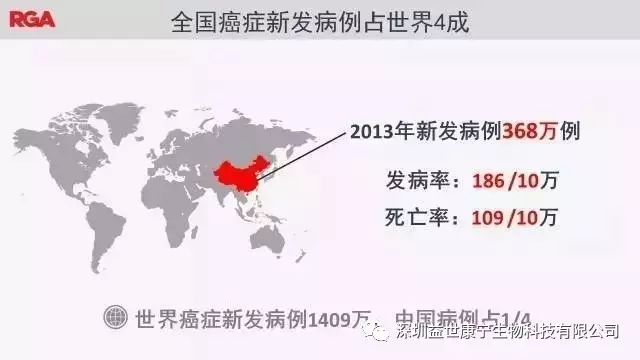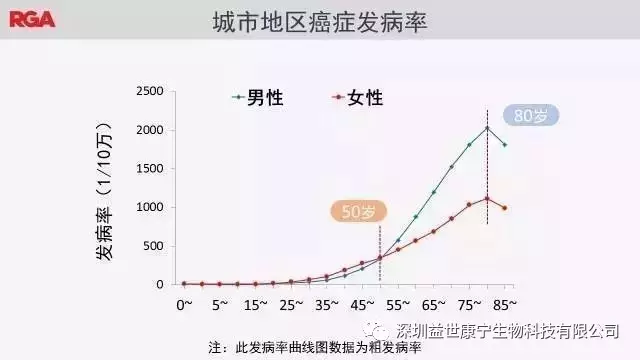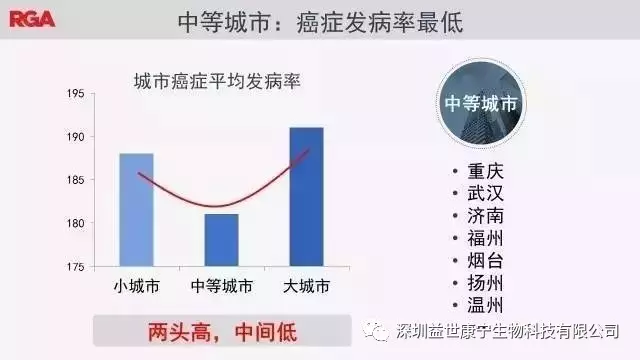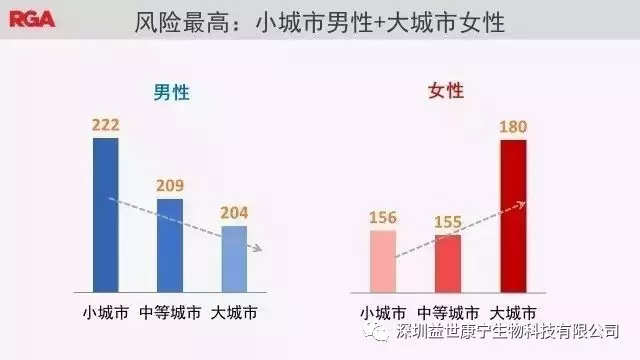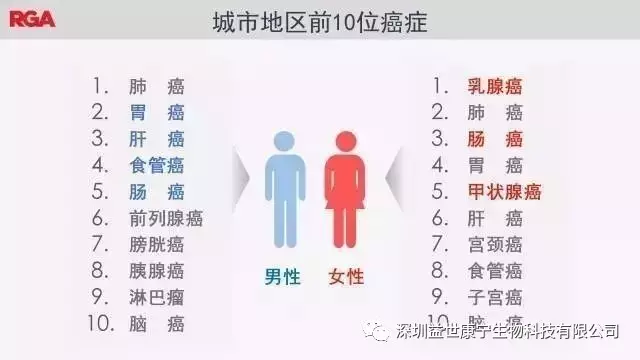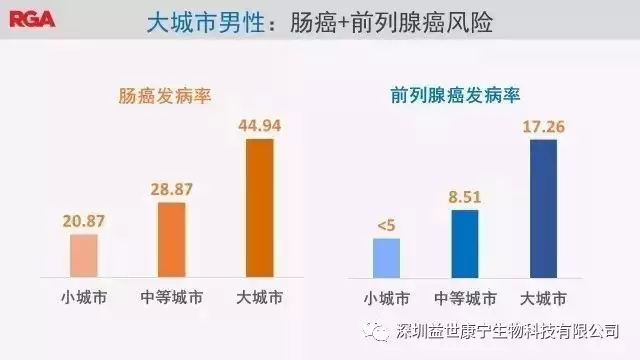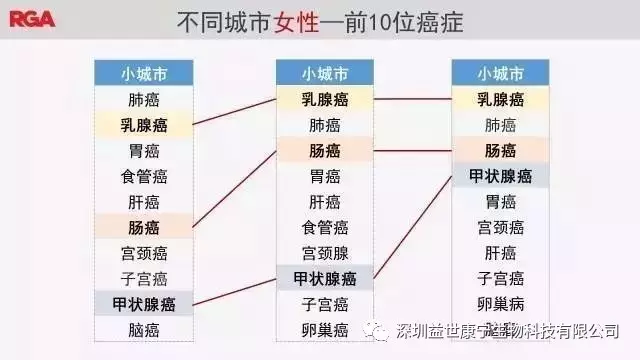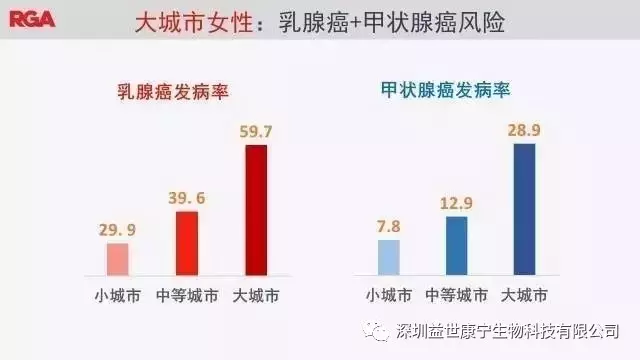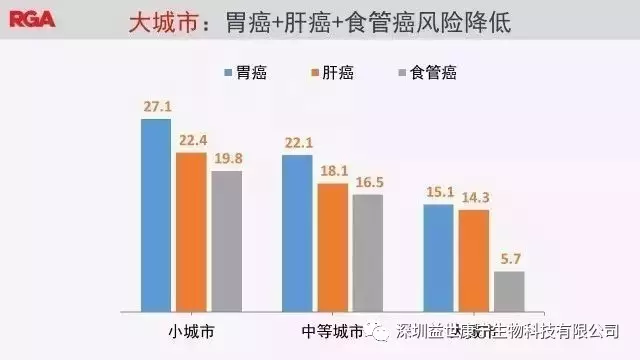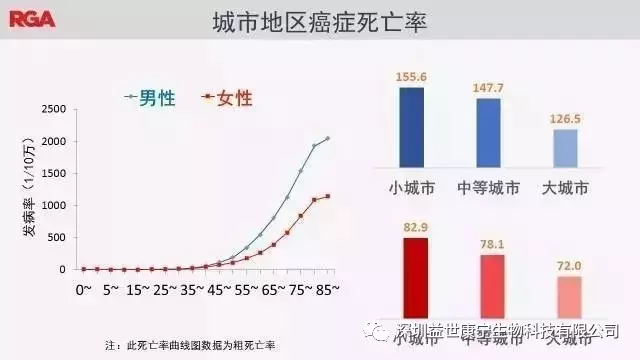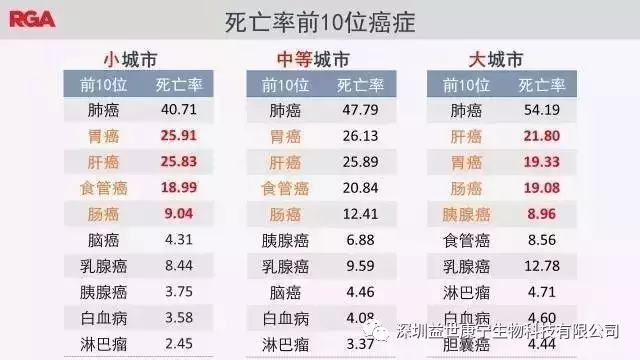Cancer statistics show that in China, there are 4.29 million new cancer cases each year, accounting for 20% of the global new cases, and 2.81 million deaths. Cancer prevention has become an important public health issue in our country.
In February 2017, the National Cancer Center released the latest cancer data in China, which aggregated data from 347 cancer registries across the country. China's cancer statistics generally lag behind 3 years, and the latest release is the incidence and death data in 2013.
Summary of main content
About 10,000 people are diagnosed with cancer every day in the country; about 7 people are diagnosed with cancer every minute
By the age of 85, a person’s risk of cancer is 36%;
Lung cancer ranks first in both morbidity and mortality;
Thyroid cancer is rising rapidly;
The incidence rate increases rapidly after the age of 40, and reaches a peak at the age of 80;
Medium-sized cities, such as Chongqing and Wuhan, Jinan have the lowest cancer incidence;
Males in small cities and females in big cities have a high incidence;
Men in big cities: high risk of prostate cancer and bowel cancer;
Women in big cities: breast and thyroid cancer are at the highest risk;
Cancer mortality: high in small cities, low in big cities;
The leading cancers in mortality are mainly lung cancer and digestive system cancer.
This cancer statistics pays particular attention to the differences in different urban areas. RGA summarized and analyzed relevant reports and data, compiled this report "The latest data on cancer in Chinese cities" and shared it with you.
Pay attention to 8 major risks
At 85 years of life expectancy, the cumulative risk of cancer is as high as 36%
Cancer incidence is high at both ends and low in the middle: medium-sized cities have the lowest cancer incidence
Female cancer is highest in big cities, male cancer is highest in small cities
Under the age of 50, the incidence of adult women is higher than that of men
Lung cancer still ranks first in the incidence and mortality of cancer in my country, which is comparable to the level of developed countries
Digestive tract cancer is the main burden of morbidity and death among Chinese residents
Prostate cancer is gradually increasing with the development of urbanization, men in big cities should be vigilant
The incidence of thyroid cancer is rising rapidly, and it needs special attention
*The data in the report are all age-standardized rates, the unit is 1/100,000
Compared with 2012, the number of new cancer cases continued to rise, from 3.58 million to 3.68 million, an increase of 3%;
In the same year, there were approximately 14.09 million new cases worldwide. China's new cancer cases account for a quarter of the world.
1. Before the age of 40, it is at a low level, after that it starts to rise rapidly, and reaches the peak at the age of 80;
2. Urban women between 20-50 years old have a higher cancer incidence than men of the same age;
3. Chinese urban residents 0-85 years old, the cumulative risk of cancer is 36%.
1. The average incidence of cancer in large/medium/small cities in China is significantly different, and the incidence is "U"-shaped;
2. The average cancer incidence of men and women in medium-sized cities is the lowest.
1. With the development of urbanization, men's cancer risk gradually decreases, and men in small cities have the highest risk;
2. The cancer risk of women is opposite to that of men, and women in big cities have the highest cancer risk.
1. Digestive tract cancer: The main cancer burden of Chinese people, accounting for about 50% of all cancers in men;
2. Bowel cancer: The increasing trend of urban women is obvious, which is mainly related to unhealthy diet, sedentary, and thickened waist;
3. Thyroid cancer: Urban women need special attention.
1. Cancer spectrum: obvious differences in large/medium/small cities;
2. Lung cancer: It is still the number one cancer among men in various cities and is closely related to smoking and environmental pollution;
3. Bowel cancer and prostate cancer: From small cities to large cities, the trend of incidence is increasing.
1. Bowel cancer and prostate cancer: the incidence is positively correlated with the degree of urbanization;
2. Bowel cancer: the incidence rate in big cities is twice that of small cities;
3. Prostate cancer: The incidence of prostate cancer in small cities is <5/100,000, while the incidence in large cities is 4 times that of small cities.
1. Breast cancer: It is the main burden of urban women's cancer, which is mainly related to the high pressure of urban women, late marriage and late childbirth, and fast-paced life;
2. Lung cancer: also ranked in the forefront, mainly related to second-hand smoke exposure and indoor/outdoor air pollution;
3. Bowel cancer: As the level of urbanization gradually increases, it is mainly related to urban women's sedentary, lack of exercise, and unhealthy diet.
1. Breast cancer: The risk of breast cancer for women in large cities is twice that of small cities;
2. Thyroid cancer: The risk of disease in big cities is 4 times that of small cities.
1. With the increase of urbanization, the incidence of some cancers has also decreased, mainly in gastric cancer/liver cancer/esophageal cancer;
2. Stomach cancer is related to unclean diet, irregular eating, frequent smoked and pickled food;
3. Liver cancer is mainly related to hepatitis B, excessive drinking, and eating moldy corn/rice;
4. Esophageal cancer is related to hot food and stale diet.
1. Although the incidence of cancer is higher in big cities, the mortality rate is nearly 20% lower than that in small cities;
2. The higher the level of urbanization, the more superior medical and health regulations, and more advanced options for cancer treatment.
*The top five cancers with mortality are mainly lung cancer and digestive system cancer.

